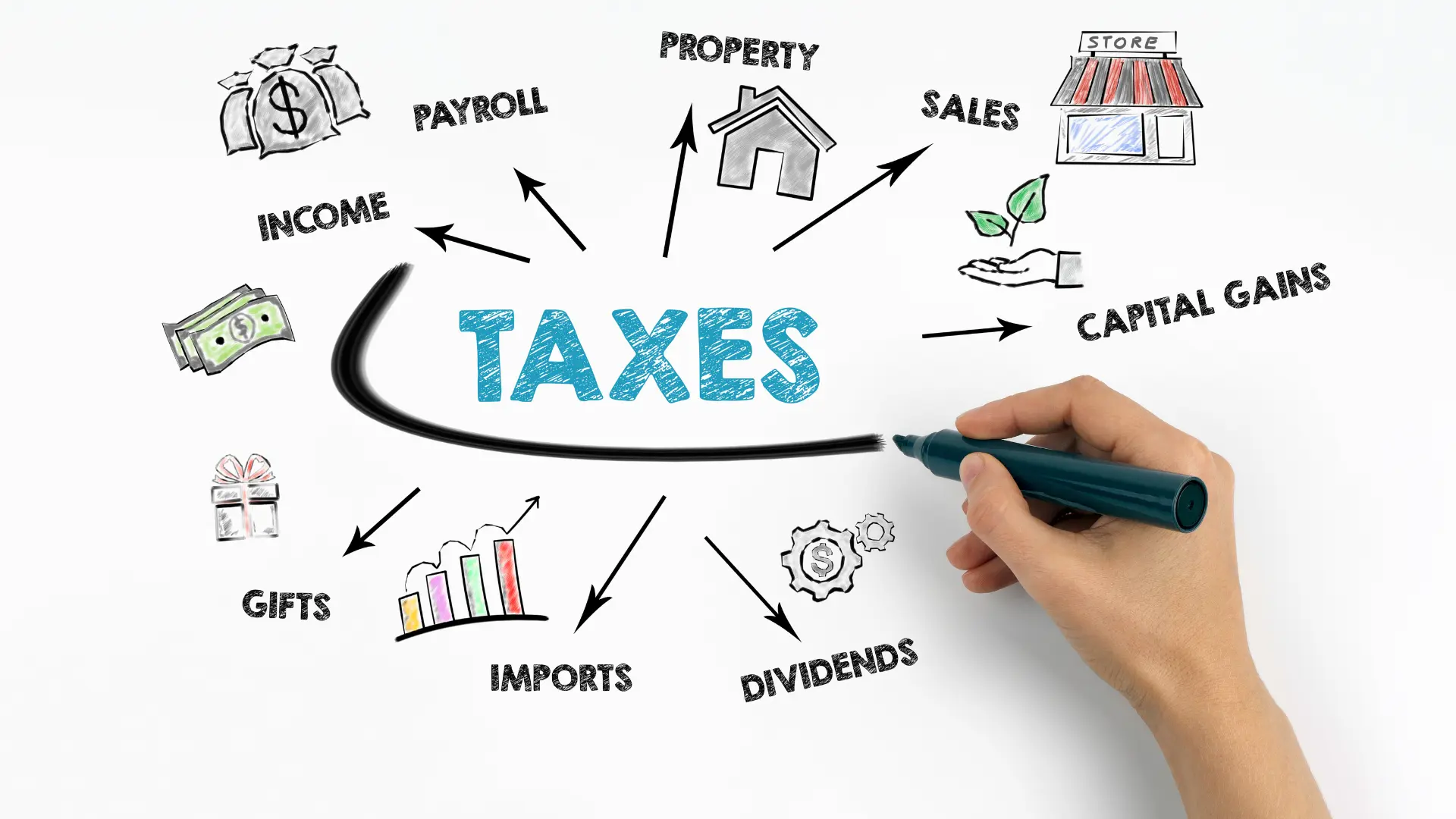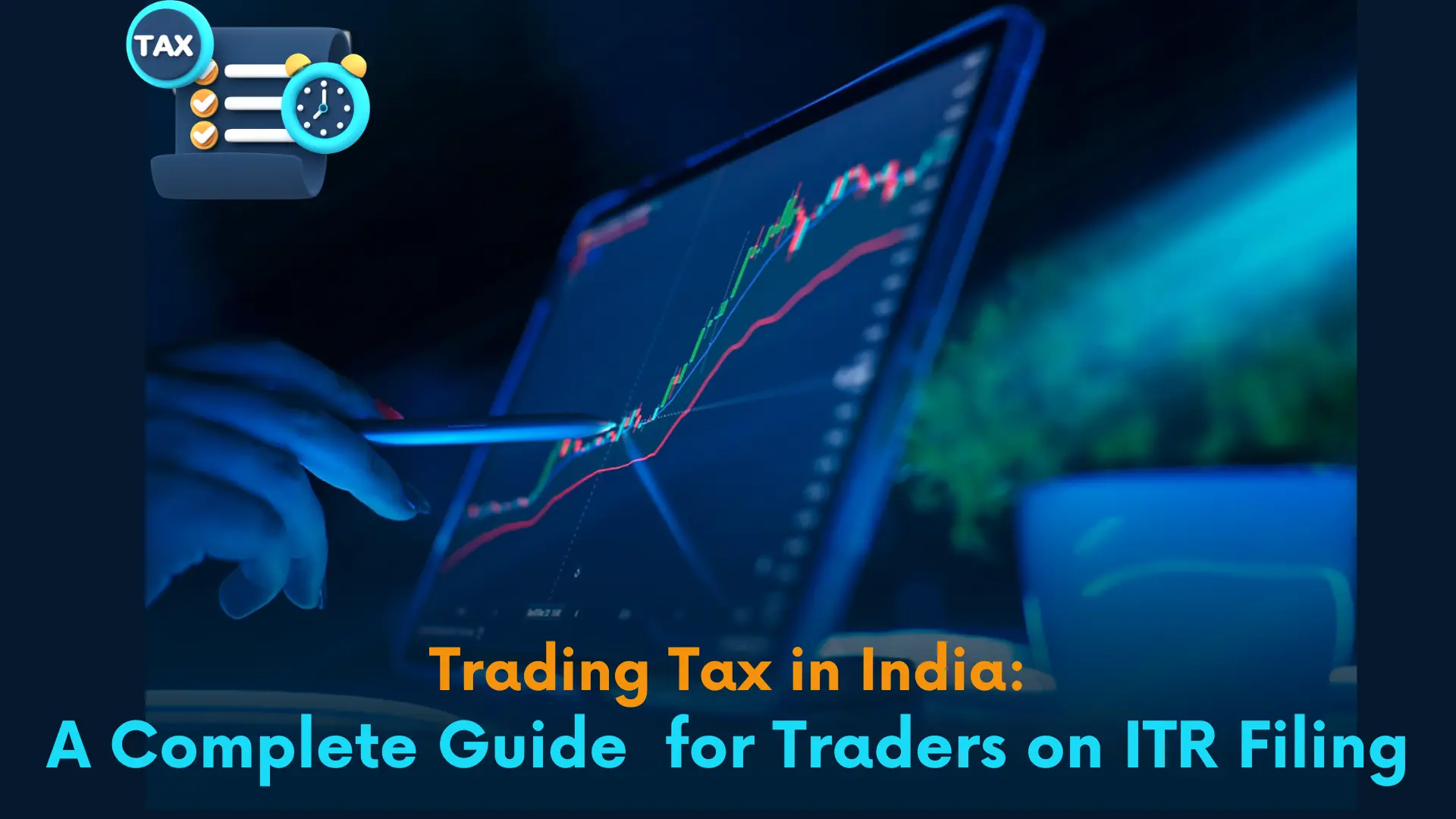Introduction
Today , in this blog, we will learn about trading tax in India because stock market trading has become increasingly popular , with millions of investors participating in equity, futures & options (F&O), and intraday trading . However, understanding the tax implications of trading is crucial to ensure compliance with tax laws and optimize financial planning. This guide provides a detailed overview of trading tax in India , including capital gains tax, business income taxation, and applicable deductions.
Types of Taxes on Trading in India

1. Capital Gains Tax
Short-Term Capital Gains (STCG) Tax
- If you sell equity shares or equity-oriented mutual funds within 12 months of purchase, the profits are classified as short-term capital gains (STCG) .
- Tax Rate: 15% under Section 111A of the Income Tax Act.
- Applicability: STT (Securities Transaction Tax) must be paid for concessional tax rates.
Long-Term Capital Gains (LTCG) Tax
- If equity shares or mutual funds are held for over 12 months , the profits qualify as long-term capital gains (LTCG) .
- Tax Rate: 10% on LTCG exceeding ₹1 lakh per financial year under Section 112A .
- Indexation Benefit: Not applicable for equity-oriented investments.
2. Tax on Intraday Trading
- Nature of Income: Intraday trading is classified as speculative business income .
- Tax Rate: Taxed as per individual income tax slabs .
- Deductions: Brokerage fees and other transaction charges can be deducted.
- Loss Set-Off: Speculative losses can be set off only against speculative gains and carried forward for four years .
3. Tax on Futures and Options (F&O) Trading
- Nature of Income: Non-speculative business income under Section 43(5).
- Tax Rate: Taxed as per individual income tax slabs .
- Loss Set-Off: F&O trading losses can be set off against any income except salary and carried forward for eight years .
Income Tax Slabs for FY 2024-25 (AY 2025-26)
Income Slab (₹) | Old Tax Regime | New Tax Regime |
Up to 2,50,000 | Nil | Nil |
2,50,001 - 5,00,000 | 5% | 5% |
5,00,001 - 7,50,000 | 20% | 10% |
7,50,001 - 10,00,000 | 20% | 15% |
10,00,001 - 12,50,000 | 30% | 20% |
12,50,001 - 15,00,000 | 30% | 25% |
Above 15,00,000 | 30% | 30% |
Other Applicable Taxes & Charges on Trading
- Securities Transaction Tax (STT): Levied on the purchase and sale of equities and derivatives.
- Goods and Services Tax (GST): 18% GST on brokerage and transaction fees.
- Stamp Duty: Charged based on transaction value and state regulations.
- Turnover Tax: This applies to high-volume traders exceeding turnover limits.
Filing Tax Returns for Traders
- Which ITR to File?
- Investors with capital gains file ITR-2 .
- Traders with business income from F&O or intraday trading file ITR-3 .
- Tax Audit Requirement: If turnover exceeds ₹10 crore, a tax audit is mandatory.
- Advance Tax Payment: If the total tax liability exceeds ₹10,000 in a financial year, advance tax must be paid in installments.
How to Minimize Trading Taxes in India?
- Tax-Loss Harvesting: Offset capital gains by selling loss-making stocks.
- Optimize Holding Period: Hold investments for more than 12 months to qualify for lower LTCG tax rates.
- Use Business Expense Deductions: Claim deductions on brokerage fees, advisory services, and software costs.
- Maintain Accurate Records: Keep detailed trade logs and statements for easy tax filing.
Conclusion
Understanding trading tax in India is essential for stock market participants to ensure tax compliance and financial efficiency. By utilizing tax-efficient strategies and staying updated on tax regulations, traders can optimize their tax liabilities and maximize returns .

